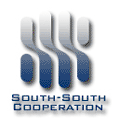



|
If you are going to establish an Electronic Commerce presence, a certain level of hardware is required. You can, of course, enter the Internet with computers that have far less power and storage than the recommended quantities stated below. You will not, however, be able to establish a satisfactory electronic commerce operation with these older machines.
|
-
Your Personal Computer should contain at least one gigabyte in storage and 64 megabytes of RAM and operate at a speed of 300 megahertz or greater. It is possible to work with less, but this level of power is about what you need to operate reasonably smoothly on the Internet. It is now possible to buy a 350 megahertz, six gigabyte machine with 64 megabytes of RAM for under $1,000. If you choose to use a computer you have had for several years, it should at least have a Pentium chip if an IBM PC or be a Power Macintosh version of the Mac.
-
An ink jet or laser printer. Good ink jet printers sell for under $200.
-
A 56 kilobytes per second modem or preferably one of the more rapid Net access channels, such as cable, dedicated phone lines, or ISDN lines. Modems are built into the newer computers. External modems cost about $100.
-
An Internet Service Provider (ISP). This is a company that provides access to the Internet through telephone or cable lines and via their connections to Internet computers. If you use a modem, make sure you choose a local telephone number as your access number. That means you can contact any site in the world for the cost of a local phone call. If you use cable or ISDN, you do not need a modem or phone access line.
ISPs vary in price and service. Have your friends or colleagues recommend you an ISP. Most ISPs offer free space on which you can locate your own Web Site. Others offer access to business data-bases. Fee structures may vary, as will the quality of technical support.
It generally costs $20.00 a month for 100 hours of telephone access per month in the U.S. Cable access costs about $40-$50 per month. Many regions of the world do not have cable access yet, but will soon. The reliability of the local access system determines the viability of eCommerce for your business.
-
A Registration Authority (RA) tool kit and a Trader's Club License are necessary for the issuance of digital certificates so that trading can take place in a secure electronic environment.
The various levels of Internet service are:
"POTS" – "Plain Old Telephone Service" that utilizes copper wires and cables and 56 kilobyte/second (kbps) modems. A 10 megabyte file takes about 25 minutes to download on a 56k modem.
ISDN lines – Information Systems Dedicated Network, operate at 128 kbps. The same 10 megabyte file will download in about 10 minutes at 128k.
DSL lines – Digital Subscriber Lines are provided by the telephone company via your own telephone line. It is a little slower than cable but just as reliable. It will take about 2.5 mnutes for the 10 megabyte file to download using DSL.
T1 lines operate at 1.544 mbps and are generally faster than DSL lines. T1 lines will download 10 megabyte files in approximately 1 minute.
Cable lines link one's computer directly to a cable network, such as those that deliver TV service. They operate at several million bytes per second. The 10 megabyte file will download in about 1 minute using cable, often faster.
ATM - Asynchronous Transfer Modes, are currently the most advanced delivery method, via twisted pairs of fiber and special hardware routers that allow for 45 mbps data transfer. This is a specialized, very expensive channel.
For most Information and Communication Technology (ICT) functions, any of the broad band service channels beyond POTS provide fast, reliable service. The more complex the function, the more one needs those services. Many Internet users are opting for Cable and DSL service, where available.
It is possible to conduct business at 56 kbps using a modem and regular telephone line. However, 56k modems will significantly slow down access, downloading, and transaction times, which is usually a tremendous hindrance to a successful e-Commerce venture.
Remember, your business only needs PCs to access the Internet. The Chambers can help you assess how well your regional or national ICT systems can support Internet access and e-Commerce.
|

![]()

![]()
![]()
![]()
![]()